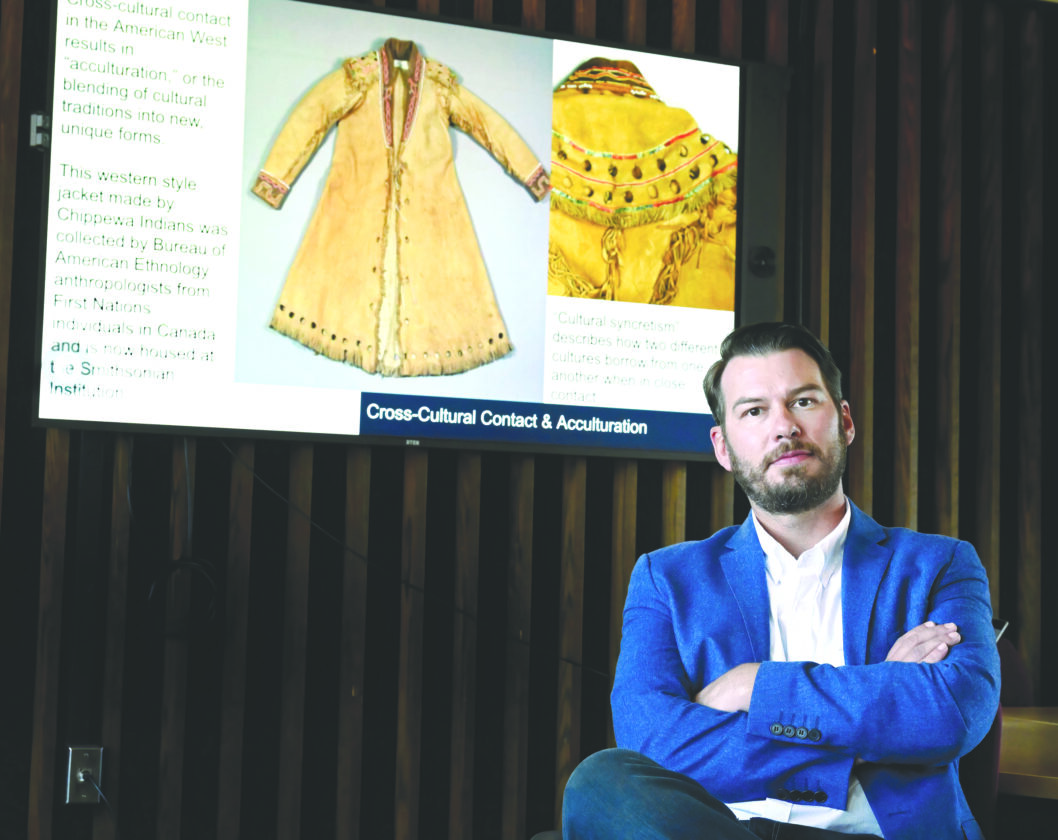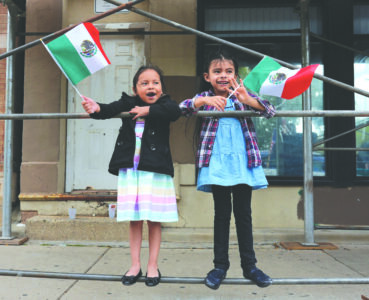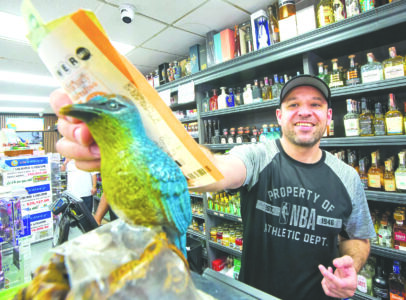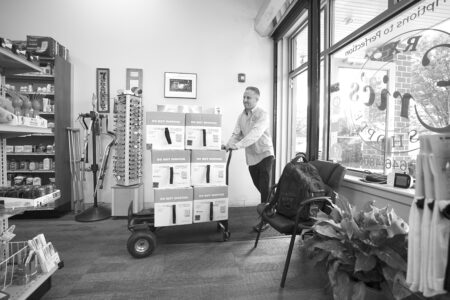Smithsonian content changes would reach into classrooms

Samuel J. Redman, Ph.D., professor of history and director of the Public History Program at the University of Massachusetts, sits in front of content he uses from the Smithsonian on campus in Amherst, Mass., on Wednesday. (AP photo)
High school history teacher Katharina Matro often pulls materials from the Smithsonian Institution website as she assembles her lessons. She trusts its materials, which don’t require the same level of vetting as other online resources. She uses documents and other primary sources it curates for discussions of topics like genocide and slavery.
As the White House presses for changes at the Smithsonian, she’s worried she may not be able to rely on it in the same way.
“We don’t want a partisan history,” said Matro, a teacher in Bethesda, Maryland. “We want the history that’s produced by real historians.”
Far beyond museums in Washington, President Donald Trump’s review at the Smithsonian could influence how history is taught in classrooms around the country. The institution is a leading provider of curriculum and other educational materials, which are subject to the sweeping new assessment of all its public-facing content.
Trump is moving to bring the Smithsonian into alignment with his vision of American history. In a letter last month to the Smithsonian Institution, the White House said its review is meant to “assess tone, historical framing, and alignment with American ideals.” It’s part of Trump’s agenda to “celebrate American exceptionalism” by removing “divisive or partisan narratives,” it said.
Those opposed to the changes fear they will promote a more sanitized version of American history.
In celebration of the country’s 250th anniversary next year, the Education Department recently launched the White House’s Founders Museum in partnership with PragerU, a conservative nonprofit that produces videos on politics and history. Visitors to the museum in the Eisenhower Executive Office Building, as well as the White House website, can read biographies on the signers of the Declaration of Independence and watch videos that depict them speaking.
“Real patriotic education means that just as our founders loved and honored America, so we should honor them,” Education Secretary Linda McMahon said in a PragerU video introducing the project.
The project mentions some signers favoring abolition and includes Phillis Wheatley, an enslaved woman who became the first published Black female poet in the U.S. But critics say it brushes over some of the nation’s darker past.
“Those are the kinds of things that teachers are really leery of because they don’t see partisanship in the sources that we’re using as being good educational practice,” said Tina Ellsworth, president of the National Council for the Social Studies.
Supplement resources
Like many other history teachers, Matro said she turns to materials from the Smithsonian because she doesn’t have the time to create lessons from scratch or the budget to buy the latest books. She favors the museum’s digitized collections to guide her classes.
“I don’t have to figure out ‘Is this real? Is this not real?’ I can trust the descriptions of the artifact,” she said.
More than 80% of history teachers report using free resources from federal museums, archives and institutions including the Smithsonian, according to an American Historical Association survey last year.
The federal institutions’ materials have been widely trusted partly because they are thoroughly examined by professionals, said Brendan Gillis, the historical association’s director of teaching and learning. Some teachers have out-of-date history textbooks, and online resources from institutions like the Smithsonian can fill the gaps, he said.
“That’s been one of the most influential and profoundly important ways that the federal government has invested in social studies education over the last couple of decades,” Gillis said.
While education always has been part of the Smithsonian’s mission, developing materials specifically for classrooms became more prevalent after World War II, said William Walker, a State University of New York, Oneonta, professor who has researched the Smithsonian’s history. The museum organizes professional development workshops for teachers and offers materials ranging from worksheets to videos.
—-
The Associated Press’ education coverage receives financial support from multiple private foundations. AP is solely responsible for all content. Find AP’s standards for working with philanthropies, a list of supporters and funded coverage areas at AP.org.




